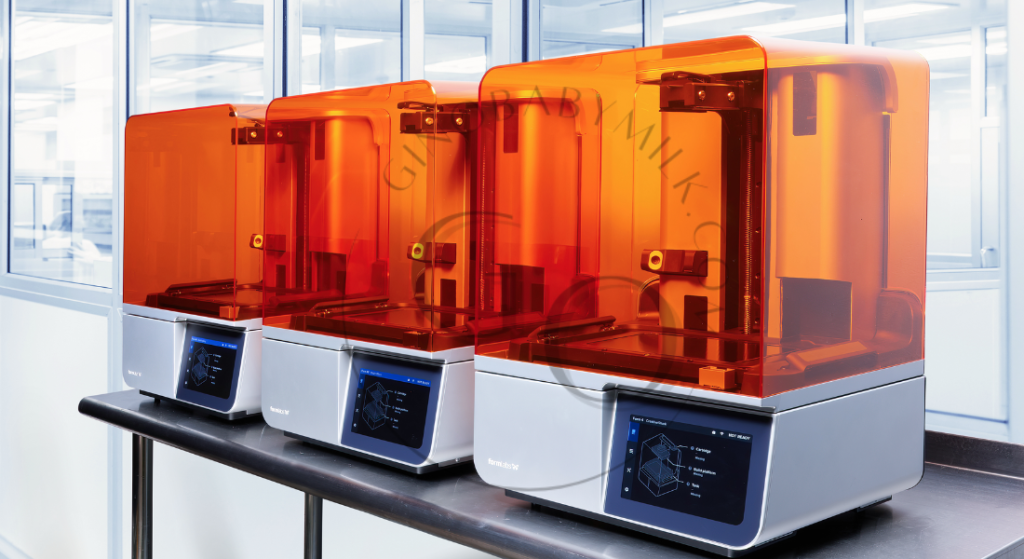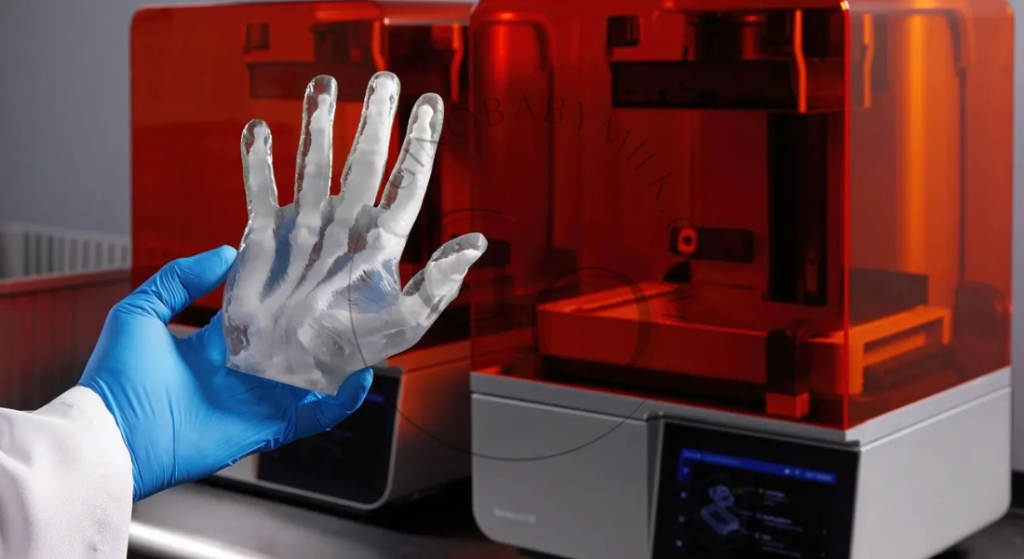blog
High-End 3D Bioprinter for Complex Structures Offering Advanced Precision in Medical and Scientific Applications
The world of 3D printing has experienced monumental advancements in recent years, and the introduction of the high-end 3D bioprinter has revolutionized both medical and scientific applications. This cutting-edge technology allows for the creation of complex structures with unparalleled precision, opening new doors to personalized medicine, scientific research, and even organ transplantation. The high-end 3D bioprinter is designed to cater to the intricate needs of healthcare providers, scientists, and researchers by offering enhanced capabilities for fabricating complex biological tissues and structures.
In this article, we’ll explore the significant benefits of the high-end 3D bioprinter for medical applications, its role in scientific research, and how it’s shaping the future of healthcare and innovation.
What is a High-End 3D Bioprinter?
A high-end 3D bioprinter is an advanced machine designed to print three-dimensional objects using biological materials, including human cells, proteins, and other organic substances. These bioprinters use a layer-by-layer approach to build complex structures that mimic natural tissues, organs, and biological systems. Unlike traditional 3D printers that use materials like plastics or metals, a bioprinter works with living cells to produce biologically functional structures, making it a revolutionary tool in both medicine and science.
These printers incorporate precision technologies that ensure the correct placement of cells, biomaterials, and other elements to create living tissues that function similarly to the tissues found in the human body. The ability to print complex structures opens up possibilities in drug development, tissue engineering, and even organ transplantation.
The Role of High-End 3D Bioprinter in Medical Applications
1. Precision Medicine and Personalized Treatments
One of the most exciting applications of the high-end 3D bioprinter in medicine is its potential for precision medicine. With this technology, it’s possible to design personalized treatments based on a patient’s unique genetic makeup. By printing tissues that closely mimic the patient’s own cells, doctors can test and tailor treatments to ensure the most effective approach for each individual.
The ability to create patient-specific models of organs or tissues allows doctors to experiment with different treatment plans and techniques, ultimately improving patient outcomes. This personalized approach to medicine is expected to play a crucial role in future cancer treatments, gene therapies, and regenerative medicine.
2. Tissue Engineering and Regeneration
A significant challenge in modern medicine is the need for viable tissue transplants. The high-end 3D bioprinter offers the potential to print human tissues for transplantation, reducing the reliance on organ donors and alleviating the shortage of transplantable organs. Through tissue engineering, bioprinters can create functional vascularized tissues that replicate the characteristics of natural organs.
Researchers are using 3D bioprinting technology to develop artificial skin, bone, cartilage, and even blood vessels, which can be used to treat burns, bone fractures, and other conditions requiring tissue replacement. This technology has the potential to revolutionize how we approach organ failure and transplantation in the future.

3. Drug Development and Testing
The high-end 3D bioprinter is also playing a pivotal role in drug development. Traditional methods of testing drugs on animals are time-consuming, expensive, and often ineffective. Bioprinted tissues allow for more accurate drug testing on human-like tissue models, helping researchers identify potential drug candidates more efficiently.
By creating models of human organs or disease states, researchers can study how different drugs interact with specific tissues, observe their effects, and determine their safety before moving on to clinical trials. This method significantly reduces the risk of failed drug trials and accelerates the development of new treatments.
4. Medical Education and Training
The ability to print realistic 3D models of human organs and tissues has proven invaluable in medical education and training. Medical students and professionals can study anatomy in greater detail by interacting with bioprinted models that closely resemble actual human organs. These models are especially beneficial for hands-on training in surgical procedures, where students can practice on bioprinted tissue instead of relying on cadavers or animal models.
5. Advanced Precision in Surgical Planning
In addition to its role in medical research, the high-end 3D bioprinter also plays a critical part in surgical planning. Surgeons can print models of a patient’s organ or affected area based on medical imaging data (such as CT scans or MRIs). These 3D-printed models allow surgeons to visualize the anatomy in 3D and plan their approach before the actual procedure.
The ability to practice on a 3D model before performing surgery leads to more precise and efficient surgeries with fewer complications. This innovation is especially important in complex surgeries such as organ transplants, reconstructive surgeries, or spinal operations, where precision is essential.
Applications in Scientific Research
The potential of high-end 3D bioprinting extends beyond medical treatments and into the realm of scientific research. By enabling the creation of complex, living tissues in the lab, bioprinting opens up new avenues for experimentation and discovery in various fields, including genetics, tissue development, and environmental science.
1. Genetic Research and Custom Organ Models
Scientists can use 3D bioprinting to create custom models of genetically modified tissues or organs, allowing for a deeper understanding of how genes affect organ development and disease. This technology is particularly useful for genetic research, where researchers can simulate genetic diseases and study their progression in a controlled environment.
For example, researchers have used bioprinted human heart tissues to study how genetic mutations affect heart function, leading to breakthroughs in treatments for genetic heart conditions. The ability to print organs with specific genetic traits allows for more targeted research into genetic diseases and potential therapies.
2. Cancer Research
One of the most significant applications of high-end 3D bioprinting in scientific research is its role in cancer research. By bioprinting cancerous tissues, scientists can study the progression of different cancers, how tumors grow, and how they respond to various treatments. Bioprinted tumor models can mimic the complex structure of real tumors, providing a more accurate representation of how cancer cells behave in the human body.
Additionally, 3D bioprinting allows for testing new cancer therapies and studying how cancer cells react to different drugs, helping to accelerate the development of more effective treatments.
3. Environmental Science and Sustainable Solutions
3D bioprinting technology also has potential applications in environmental science. Researchers are exploring the possibility of using bioprinted structures to help clean polluted environments or create more sustainable solutions. For instance, bioprinted algae or bacteria cultures could be used to clean water or absorb carbon dioxide from the atmosphere.
Scientists are also investigating how bioprinting technology can be applied to create sustainable building materials or biodegradable structures, reducing the impact of manufacturing on the environment.
The Future of High-End 3D Bioprinting
The potential for high-end 3D bioprinting is limitless, and we are only scratching the surface of its capabilities. As technology advances, we can expect even more sophisticated bioprinting systems that allow for greater precision and the creation of even more complex biological structures.
One of the most exciting prospects is the development of bioprinted organs that can be used for transplants. While we are still years away from printing fully functional organs such as kidneys, livers, or hearts, significant progress is being made. Scientists are already able to print simpler tissues and structures, and as bioprinting technology continues to evolve, the goal of creating transplantable organs is becoming more achievable.
Additionally, as smart technologies and AI integration become more prevalent, we can expect the 3D bioprinter to become even more efficient. The integration of machine learning could allow these printers to automatically adjust their printing processes based on the materials used, ensuring better results and faster production times.
Why Choose a High-End 3D Bioprinter?
When it comes to bioprinting, precision, quality, and reliability are paramount. A high-end 3D bioprinter offers unmatched precision in the creation of complex structures, making it the ideal choice for medical professionals, researchers, and scientists who require advanced precision for medical and scientific applications.
These printers are designed with the latest technology to deliver the highest quality results, whether you’re creating tissues for medical treatments, designing custom organ models, or conducting cutting-edge scientific experiments. The versatility, smart features, and accuracy of a high-end 3D bioprinter make it an invaluable tool for anyone involved in the fields of biomedical engineering, genetic research, or medical science.
Conclusion
The high-end 3D bioprinter is transforming the future of both medicine and scientific research. Its ability to create complex structures with unparalleled precision is paving the way for advancements in tissue engineering, drug development, and genetic research. As this technology continues to evolve, it promises to revolutionize how we approach healthcare, offering more personalized treatments, safer surgical procedures, and innovative solutions to some of the world’s most pressing medical challenges.
For hospitals, research institutions, and universities, investing in a high-end 3D bioprinter is a step toward the future. With its advanced capabilities, this technology is sure to play a central role in the development of new medical treatments, the advancement of scientific knowledge, and the improvement of patient outcomes in the years to come.


